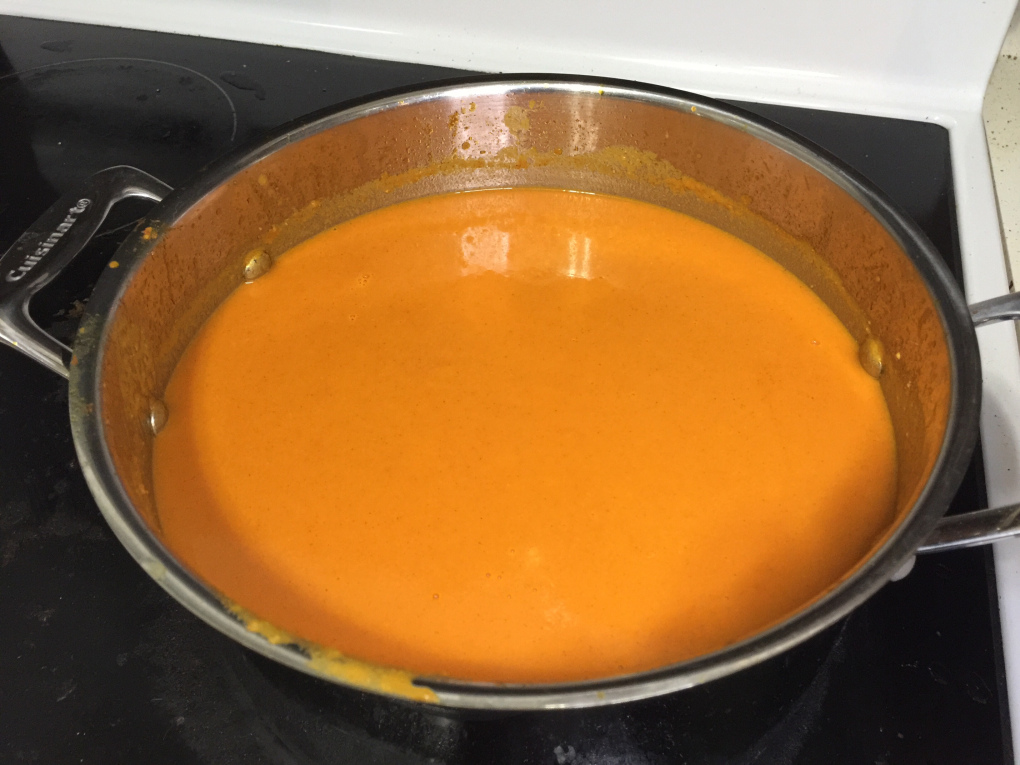This is a hot-sour-sweet curry with origins in the Parsi community. Green beans, red peppers, potatoes, shredded carrots, broccoli, and lentils. Served with brown rice…
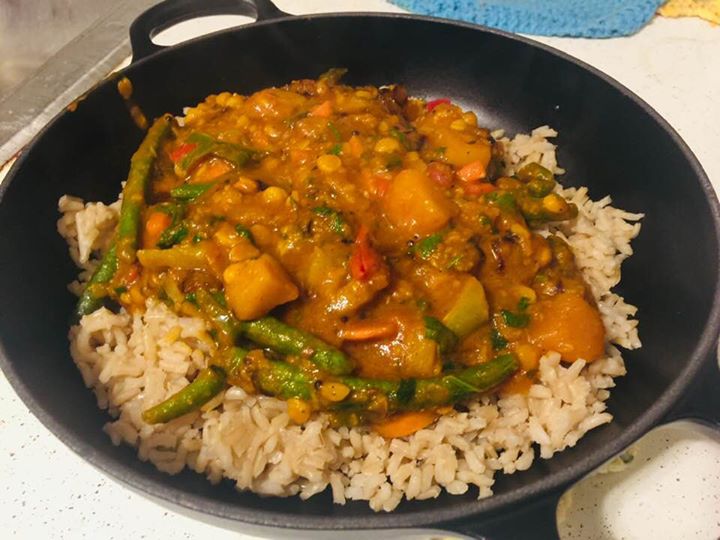 Ingredients
Ingredients
For the lentils:
1 tbsp channa dal
3 tbsp split moong dal
1/4 tsp turmeric
pinch of salt
1 cup of water
oil
1/4 tsp cumin seeds
1/4 tsp fennel seeds
1/2 tsp black mustard seeds
1/2 medium onion, diced
1/4 tsp onion frying spice mix
1 tsp ginger paste
1 tsp balti spice mix
1/4 tsp salt
1/4 tsp turmeric
2 tbsp sambal oelek
1 tsp brown sugar
1/3 cup tomato puree
2 serranos, julienned
1/2 cup pre-cooked potatoes, cubed
1 1/2 cups pre-cooked mixed vegetables (I use a package of frozen vegetables, thawed)
3/4 cup base curry gravy
1 tsp dried fenugreek leaves
handful of cilantro, chopped
1 tbsp lime juice
1/4 tsp star anise
1/4 tsp garam masala
To cook the lentils:
Combine the lentils, water, salt and turmeric in a small sauce pan. Bring to a boil, the reduce the heat to medium and cook for 30-45 minutes until the lentis are tender.
1. Heat oil in a skillet over medium-high heat.
2. Add the cumin, fennel and black mustard seeds.
3. When the seeds are sizzling in the oil, add the onions. When the onions become translucent, and the onion frying spice mix.
4. Continue cooking till the onions are beginning to brown, then add the ginger paste.
5. Add the ground spices and salt. Stir to mix well. Add a small amount of base gravy or water, as the spices will likely begin to stick to the pan at this point.
6. Add the sambal oelek, brown sugar, and tomato puree. Stir to combine. Cook for a minute or so, stirring frequently.
7. Add the serranos and potatoes. Stir well to coat in the spices and tomato mixture. Stir in the cooked mixed vegetables.
8. Stir in the cooked lentils.
9. Add a ladle (3/4 cup) of base curry gravy and the dried fenugreek. Mix well, and allow to simmer for a few minutes, stirring occasionally. Cook until the gravy has reduced and thickened.
10. Add the cilantro, lime juice, star anise and garam masala. Stir to combine.
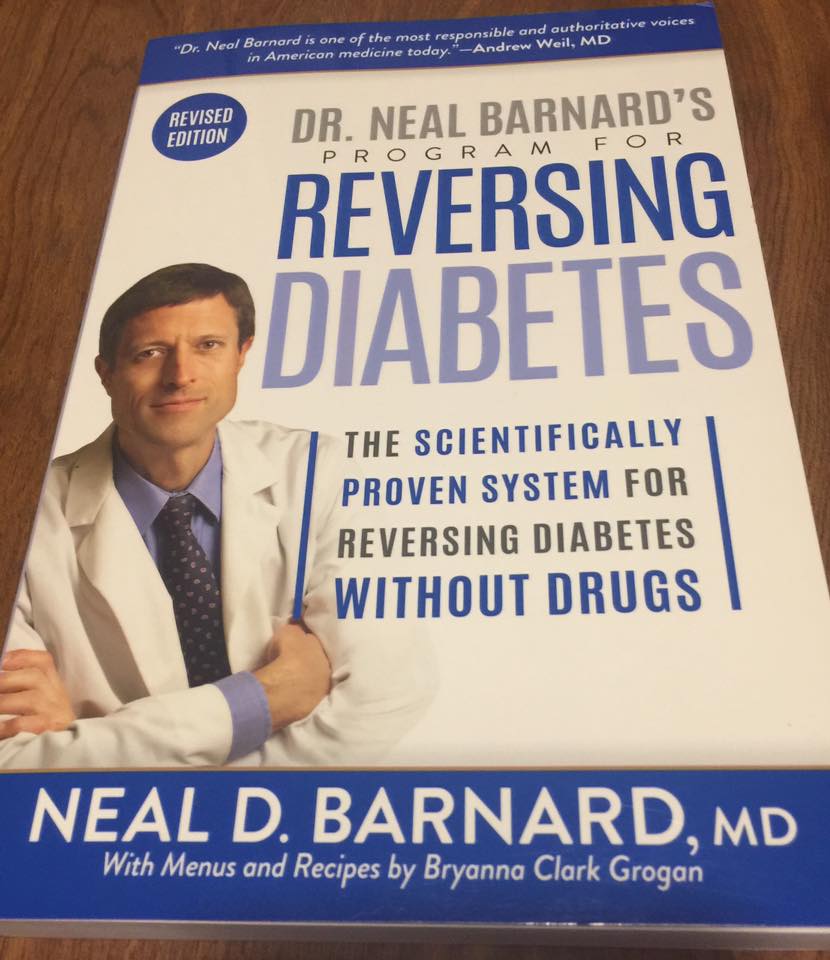


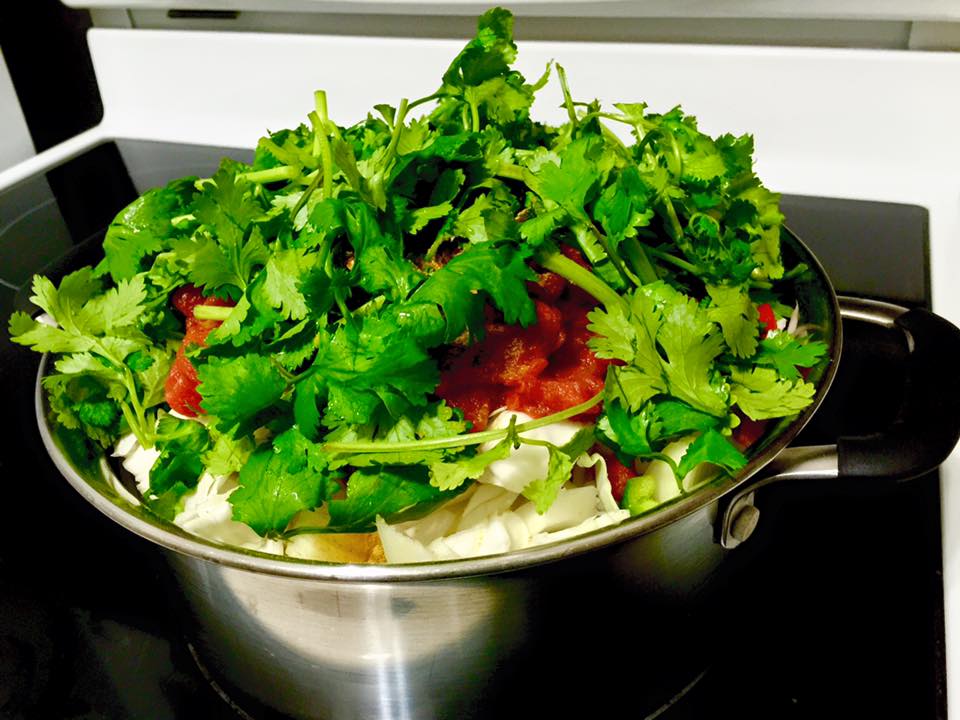 Place all of the ingredients in a sauce pan just large enough to hold all of the ingredients. (I use a 2 1/2 quart sauce pan.) Cover with a lid. It’s ok if initially the lid doesn’t fit; the ingredients will cook down during cooking. Cook over a low heat until the vegetables have softened and released their liquid. I generally cook the gravy ingredients at least 2-3 hours at this stage.
Place all of the ingredients in a sauce pan just large enough to hold all of the ingredients. (I use a 2 1/2 quart sauce pan.) Cover with a lid. It’s ok if initially the lid doesn’t fit; the ingredients will cook down during cooking. Cook over a low heat until the vegetables have softened and released their liquid. I generally cook the gravy ingredients at least 2-3 hours at this stage.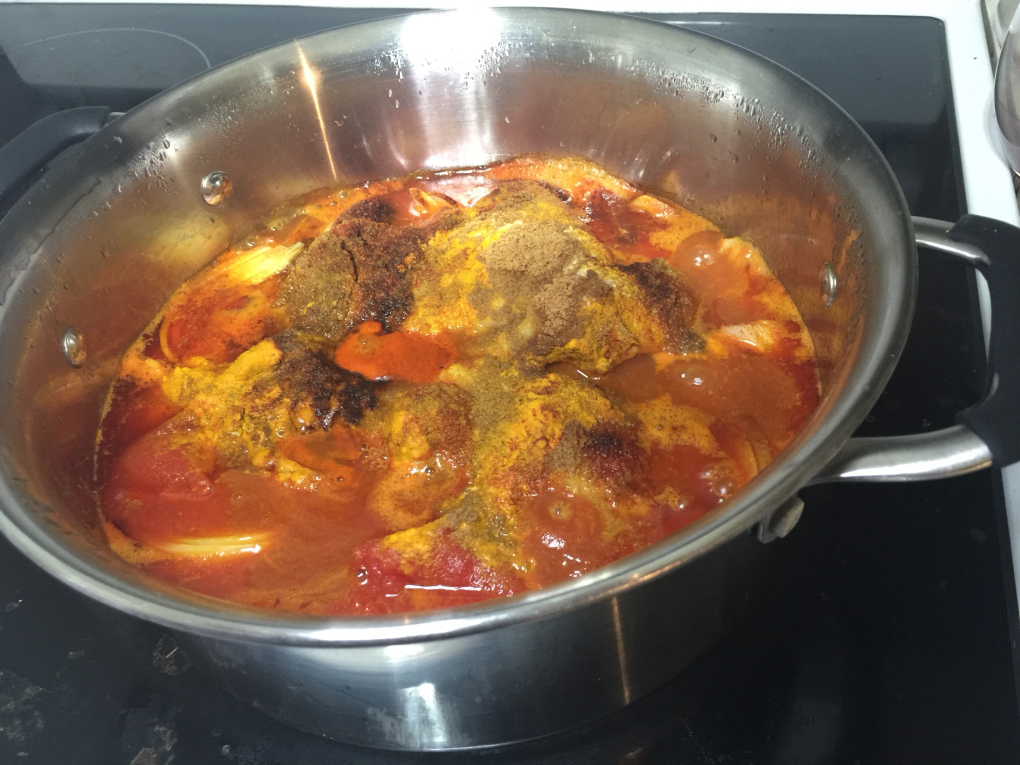 2 lbs onions, thickly sliced
2 lbs onions, thickly sliced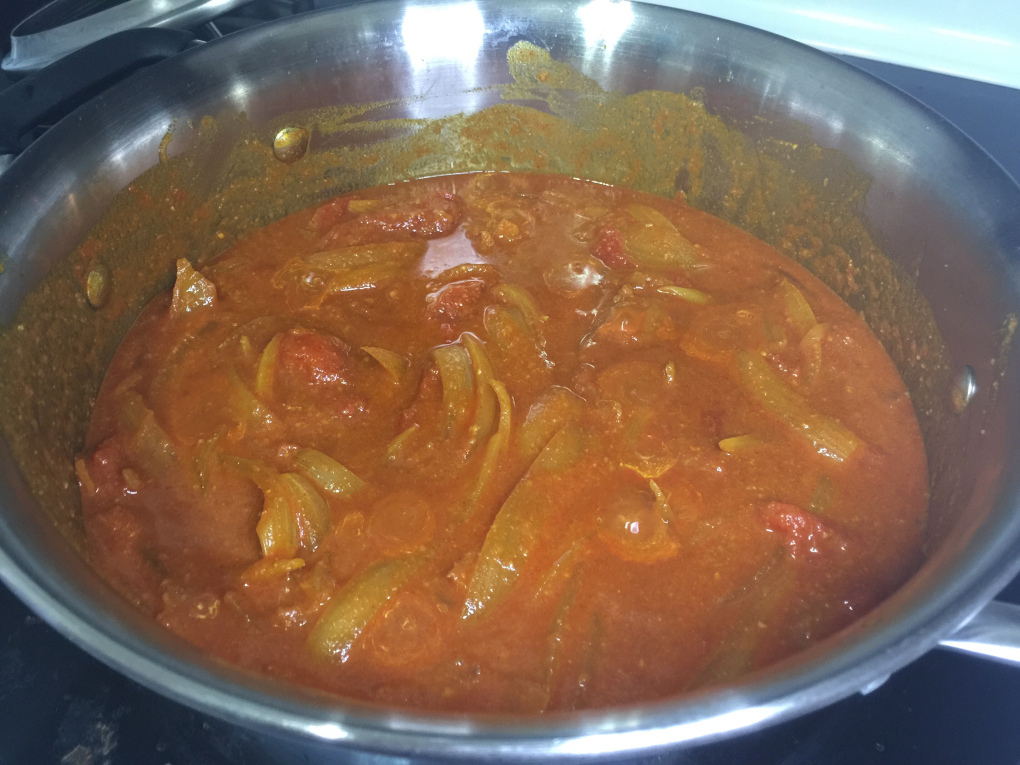 Below is a photo of the finished Balti sauce, ready to be used in cooking Balti and BIR curries.
Below is a photo of the finished Balti sauce, ready to be used in cooking Balti and BIR curries.